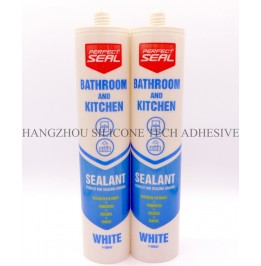Working with sealants in confined or poorly ventilated spaces, such as basements, bathrooms without windows, or enclosed cabinets, exposes individuals to harmful volatile organic compounds (VOCs) and airborne particles. Without proper precautions, these environments can lead to acute health issues or long-term respiratory damage. Below are detailed strategies to mitigate risks during seal application in low-ventilation settings.

Sealants often emit toxic fumes containing solvents, isocyanates, and other chemicals that irritate the lungs and nervous system. In poorly ventilated areas, these fumes accumulate rapidly, increasing exposure levels. A high-efficiency particulate air (HEPA) respirator or a cartridge respirator with organic vapor filters is critical for filtering out harmful substances. Ensure the respirator forms a tight seal around the face to prevent leakage.
Respirator cartridges must be specifically rated for the chemicals present in the sealant. Check labels for compatibility with VOCs, acids, or ammonia, depending on the product’s composition. Replace cartridges regularly, even if they appear undamaged, as chemical absorption capacity diminishes over time. Store respirators in clean, dry places to avoid contamination between uses.
Natural ventilation is often insufficient in enclosed spaces, making mechanical solutions essential. Portable exhaust fans placed near the work area help direct fumes away from the breathing zone. Position fans to create negative pressure, drawing contaminated air outdoors rather than circulating it indoors. For small spaces, consider using a window fan or a ducted system to channel fumes outside.
HEPA air purifiers with activated carbon filters can reduce airborne contaminants in poorly ventilated rooms. These devices capture particles and neutralize odors, improving air quality during and after application. Place purifiers close to the work area but avoid blocking airflow. Regularly clean or replace filters to maintain efficiency, as clogged filters reduce performance.
Limiting exposure time is a simple yet effective way to reduce health risks. Break long tasks into shorter sessions, taking frequent breaks in fresh air to clear lungs and reset respiratory function. Schedule work during cooler hours when windows can be opened more easily, even in small increments, to allow partial air exchange.
Apply sealant in small sections rather than covering large areas at once. This approach minimizes the concentration of fumes in the immediate environment. After completing a section, step outside to breathe clean air before resuming work. Use this method to balance productivity with health safety, especially in spaces with limited ventilation options.
While respiratory protection is paramount, skin exposure to sealant chemicals can also cause irritation or allergic reactions. Wear long-sleeved shirts, gloves, and full-length pants made from non-porous materials like nitrile or polyethylene. Avoid cotton or other absorbent fabrics that may trap chemicals against the skin. Change clothing immediately after work to prevent prolonged contact.
Goggles with sealed edges or indirect ventilation systems prevent chemical splashes and airborne particles from reaching the eyes. Combine goggles with a face shield for added protection against accidental drips or sprays. Ensure all protective gear fits snugly to eliminate gaps where contaminants could enter.
Despite precautions, accidental exposure may occur. Keep a well-stocked first aid kit nearby, including items like saline solution for eye rinsing, antihistamines for allergic reactions, and burn ointment for skin contact. Train all workers on emergency procedures, such as how to flush eyes with water for at least 15 minutes or how to use a respirator in case of sudden fume buildup.
Designate a clear evacuation route from the work area to a well-ventilated space. Post signs indicating the nearest exit and ensure doors or windows can be opened quickly. In case of dizziness, nausea, or difficulty breathing, leave the area immediately and seek fresh air. Do not return until the space has been thoroughly ventilated and deemed safe.
By implementing these measures, individuals can significantly reduce health risks associated with sealant application in poorly ventilated environments. Prioritizing safety ensures successful project completion without compromising well-being.
Copyright 2019 by Hangzhou Silicone Tech Adhesive Co., Ltd. All rights reserved.
Bathroom Sealant | Acrylic Sealant | Dow Corning 795 | Aquarium Sealant | Dow Corning 732 | Clear Silicone Sealant | Polysulfide Sealant | Glazing Sealant | Mirror Sealant | IG Sealant
Powered by Onepound